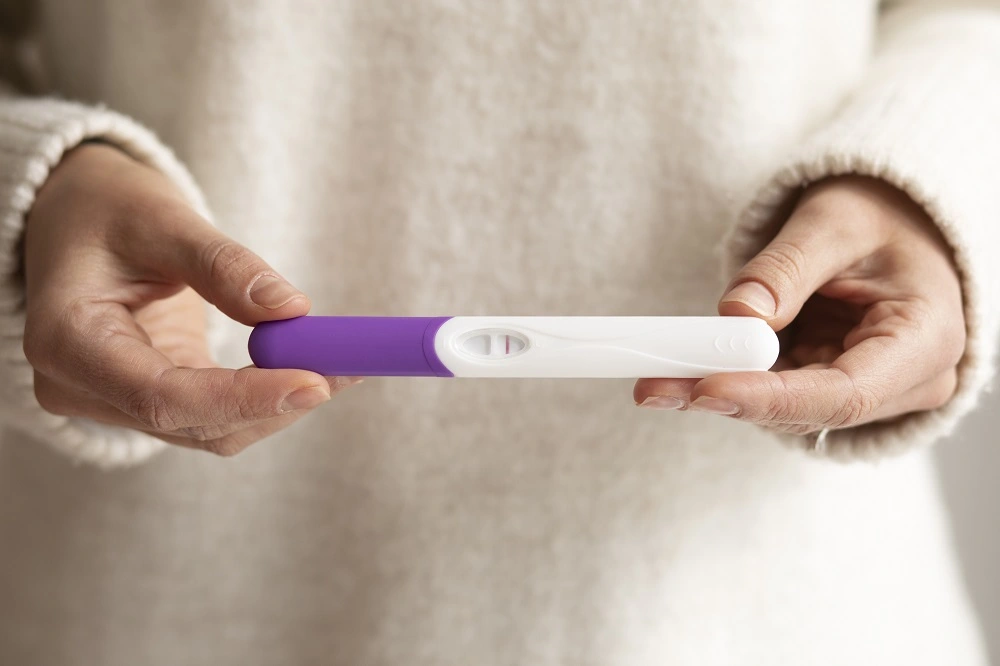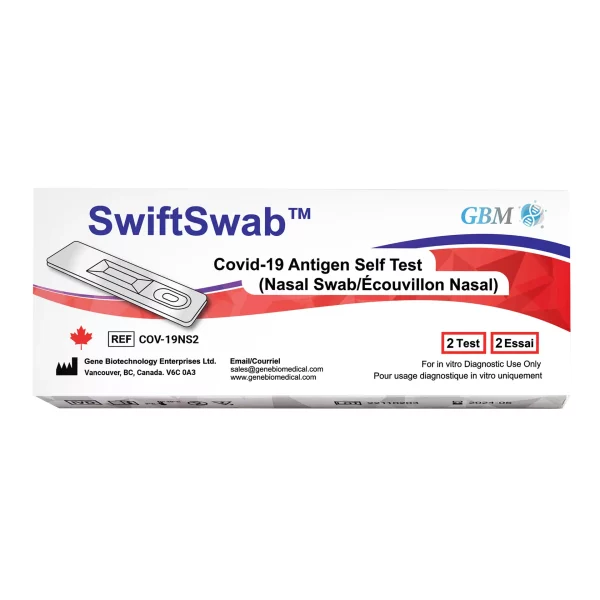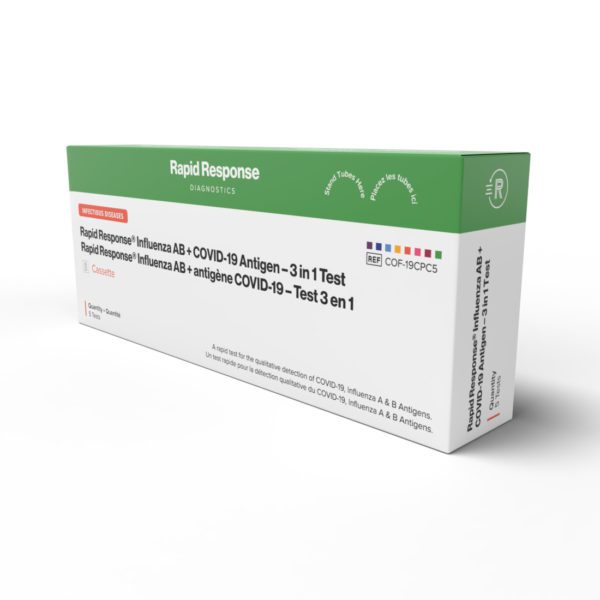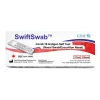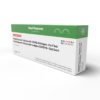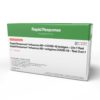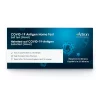Whether you’re about to start a family or you’re not trying to conceive, getting your hands on a pregnancy test can confirm your suspicions.
This comprehensive guide will walk you through the steps of how to take a pregnancy test for accurate results.
How home pregnancy tests work
Pregnancy tests are designed to detect the presence of human chorionic gonadotropin (hCG), a hormone produced after a fertilized egg attaches to the wall of the uterus.
This hormone can be found in a woman’s urine and increases in concentration in the early stages of pregnancy.
In general, hCG levels double every two to three days in early pregnancy. Most home pregnancy tests use a chemical reaction between urine and a chemical reagent on a test strip to indicate the presence of hCG, typically resulting in a color change or the appearance of a symbol.
When do you use a pregnancy test?
You should ideally take the test after you have missed your period. This timing increases the accuracy of the result, as your body needs time to produce detectable levels of hCG.
If you’re unsure about your cycle, wait at least one to two weeks after unprotected sex.
Consider taking a pregnancy test if you experience or are going through any of the following:
- Morning sickness
- Breast tenderness
- Feeling unusual symptoms
- Taking certain medications or undergoing treatments that might interfere with your cycle
If the first test comes out negative but you still suspect pregnancy, retake it in a few days or consult your healthcare provider for further guidance.
What do you do before taking the test?
Before you use a pregnancy test, it’s helpful to prepare both mentally and physically.
Consider the following:
- Test expiry date
- When you’re taking the test
- Test instructions
How do you use a home pregnancy test?
Using a home pregnancy test is easy. Follow these general steps and keep in mind that specific instructions may vary slightly by brand:
- Check the expiration date on the package and make sure it’s still valid.
- Collect your urine in a clean and dry container or urinate directly onto the test stick, depending on the test’s design.
- If the test requires dipping a test strip into urine, do so for the time specified in the instructions.
- Place the test on a flat surface and wait for the time indicated by the instructions.
- Read the result within the time frame given. Results are displayed as lines, plus or minus signs or digital readouts, depending on the test.
- Compare your results with the guide included in the test package.
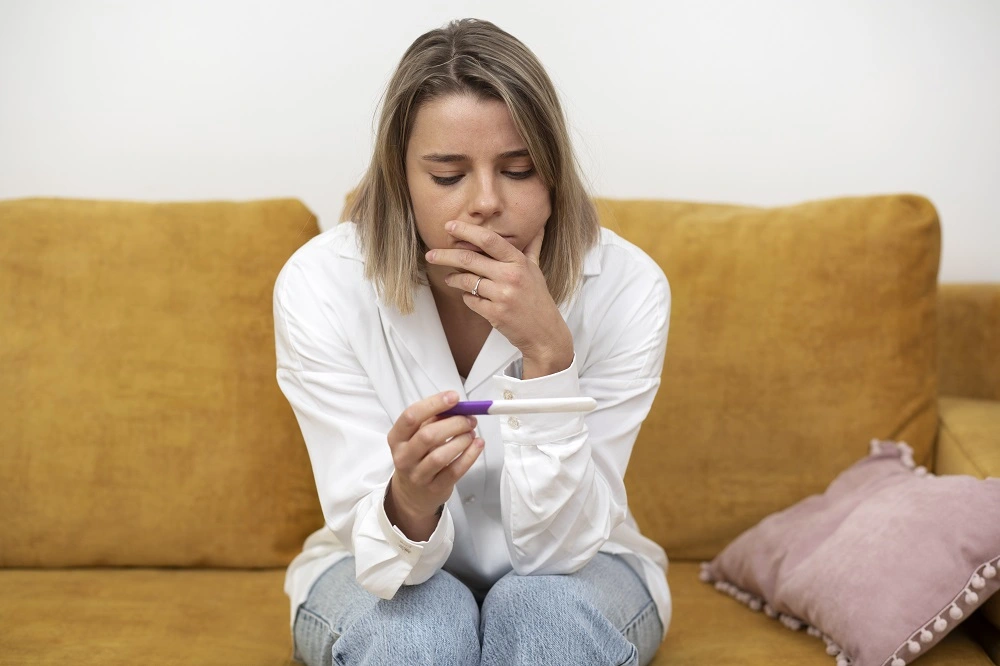
When can I take an at-home pregnancy test?
You can take an at-home pregnancy test as early as a few days before your missed period, but for the most accurate results, it’s best to wait until after your period is due. This reduces the likelihood of a false-negative result, especially in cases where ovulation occurs later than usual in your cycle.
It’s also advisable to test in the morning when your urine is most concentrated, which helps increase the chances of an accurate reading.
If you test too early and get a negative result, but still suspect you’re pregnant, don’t hesitate to test again a few days later.
How accurate are home pregnancy tests?
Modern home pregnancy tests are generally very accurate when used correctly. Most boast over 99% accuracy from the day of your expected period.
The accuracy hinges on several factors, such as:
- Timing of the test
- Following the instructions correctly
- Using an expired test
A false negative can occur if the levels of hCG are too low to be detected. In contrast, a false positive, which is rare, might occur due to certain medications, medical conditions or a very recent pregnancy loss.
If your home pregnancy test result is:
Whether positive or negative, it’s good to share the news with your partner or loved ones for emotional support.
Positive:
Getting a positive result on a home pregnancy test can be an exciting and emotional moment. The first step you should take is to schedule an appointment with your healthcare provider to confirm the pregnancy and begin prenatal care.
During this visit, your doctor will likely perform a blood test and may schedule an ultrasound to verify the pregnancy. It’s also beneficial to discuss the following:
- Your health history
- Current medications
- Symptoms you may be experiencing
Aside from visiting your doctor, it’s now a good time to start making healthier lifestyle choices, such as:
- Eating a balanced diet
- Taking prenatal vitamins
- Avoiding harmful substances like alcohol and tobacco
At the same time, consider joining a prenatal class to learn about what to expect during pregnancy and childbirth.
Negative:
When your pregnancy test result is negative, it’s natural to feel a mix of emotions, especially if you were hoping for a different outcome. Don’t lose heart if your period hasn’t started yet, as it might be too early to detect hCG in your urine.
If the test result is negative but you still suspect you might be pregnant, wait a few days and retake the test, especially if you tested early.
If you continue to get negative results and your period doesn’t start, contact your healthcare provider. They can determine if there’s another reason for your missed period and can offer advice on what to do next, especially if you’re experiencing symptoms like:
- Missed periods
- Nausea
- Breast tenderness
If you’re trying to conceive, keep tracking your cycle and continue with healthy habits. And if you’re not trying to get pregnant, consider discussing reliable contraception options with your healthcare provider.
Key takeaway
Whether you’re hoping for a positive or a negative result, home pregnancy tests offer a convenient and private way to find out if you’re pregnant, usually long before you can see a healthcare provider. As with any medical test, if you have questions or concerns about your results or your health, it’s important to consult a healthcare professional.
